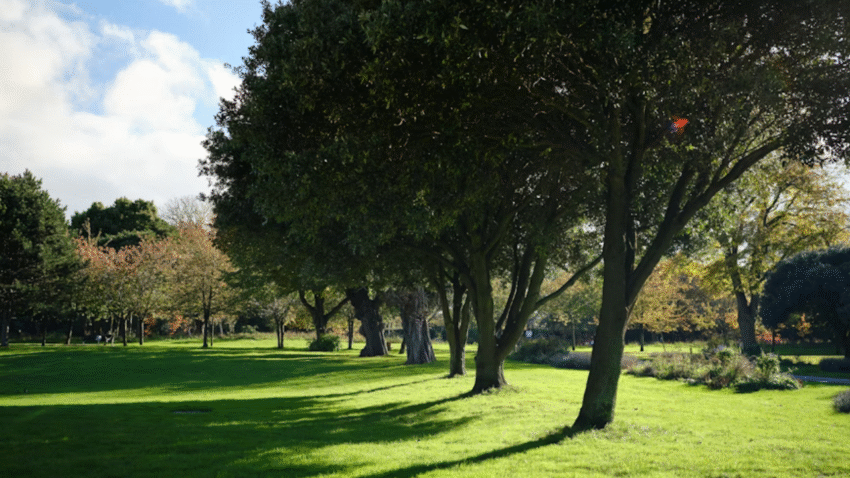Introduction
Want a lush green lawn and help save the bees? You can do both! Learning how to make your lawn bee-friendly is one of the simplest ways you can support pollinators while still enjoying a beautiful yard. This complete step-by-step guide will show you how to create a safe, healthy, buzzing habitat right in your front or backyard — no beekeeping required.
Why a Bee-Friendly Lawn Matters for a Healthy Yard
Bees are vital for pollinating flowers, fruits, and vegetables — yet their populations are declining due to habitat loss, pesticides, and lack of food sources. Traditional turfgrass lawns often act as green deserts for pollinators, offering little or no nectar or nesting spots.
By making a few smart changes, you can transform your lawn into a bee haven that provides food, shelter, and safety — all while boosting the beauty and resilience of your yard.
Step-by-Step Guide to Make Your Lawn Bee-Friendly
Here’s how to welcome bees and other beneficial pollinators into your landscape — step by step.
1. Rethink the “Perfect” Lawn
The first step is changing how you see your lawn:
- It’s OK to have a few dandelions or clover blooms! They provide an important food source for bees early in the season.
- Ditch the obsession with weed-free, golf-course-perfect grass and aim for healthy diversity instead.
This small mindset shift makes your yard friendlier to bees right away.
2. Stop Using Pesticides and Herbicides
Chemical pesticides, herbicides, and fungicides can be harmful or even lethal to bees and other beneficial insects.
- Switch to organic lawn care methods (compost, natural fertilizers, and soil improvement).
- Pull unwanted weeds by hand rather than spraying them.
- If you must treat pests, choose bee-safe organic options and apply carefully — never during bloom or midday when bees are active.
3. Mow Less Often
Mowing less frequently gives flowering “weeds” like clover, violets, and dandelions a chance to bloom.
- Try a “No Mow May” or mow every 2–3 weeks instead of weekly.
- Raise your mower blade to 3–4 inches. Taller grass shades soil, conserves moisture, and helps pollinator plants thrive.
You’ll save time, water, and fuel while helping bees!
4. Add Clover or Bee Lawn Mix
Traditional lawns are mostly just turfgrass. To feed pollinators, blend in low-growing flowering plants like:
- Dutch white clover: Fixes nitrogen naturally, feeds bees, and stays green.
- Self-heal (Prunella vulgaris) or native violets: Add color and nectar for pollinators.
Many seed companies now offer bee lawn seed mixes — a blend of fine fescue grasses and low-growing flowers that can handle foot traffic.
5. Plant Native Flower Beds Along Edges
Transform part of your lawn into a native wildflower patch or pollinator garden. Even a small border bed along a fence or driveway helps:
- Use native perennials that bloom at different times to provide food spring through fall.
- Include a mix of flower shapes, sizes, and colors to attract a variety of bee species.
Add mulch paths or stepping stones to keep it tidy and easy to maintain.
6. Provide Bee Nesting Spots
Most native bees are solitary ground nesters or cavity nesters. A few simple additions help:
- Leave a few bare patches of soil — don’t mulch every square inch.
- Pile small twigs or hollow stems in an unused corner.
- Install a bee hotel for mason bees or leafcutter bees.
Keep nesting areas pesticide-free.
7. Offer Water Safely
Bees get thirsty too! Set out a shallow dish with fresh water and pebbles for them to land on. Place it in a sunny, sheltered spot and change the water regularly to prevent mosquitoes.
8. Embrace Seasonal Bloom
Try to have something flowering throughout the growing season:
- Early spring: dandelions, crocus, native wildflowers.
- Summer: clover, native perennials, herbs like thyme and oregano.
- Fall: goldenrod, asters, sedum.
This continuous buffet keeps bees fed when they need it most.
Common Mistakes to Avoid
Mistake 1: Using Synthetic Chemicals
Solution: Avoid broad-spectrum pesticides, fungicides, and herbicides — they’re toxic to pollinators.
Mistake 2: Mowing Too Short and Too Often
Solution: Let your lawn grow taller and bloom. Less mowing means more flowers and habitat.
Mistake 3: Ignoring Bare Patches
Solution: Leave some soil uncovered — many native bees nest in bare ground.
Mistake 4: Planting Only Non-Native Flowers
Solution: Focus on native plants — they provide the best nectar and pollen for local bees.
Mistake 5: Forgetting to Provide Water
Solution: Add a bee water station with pebbles so bees can drink safely.
Extra Lawn Care Tips & Hacks
✅ Use Organic Fertilizers: Natural fertilizers build soil health and won’t harm bees.
✅ Leave the Leaves: In fall, leave some leaf litter for overwintering pollinators.
✅ Add Herbs: Herbs like lavender, thyme, and oregano flower beautifully and attract bees.
👉 Check out our guide on “How to Go Chemical-Free With Your Lawn Care” for more tips to keep your yard pollinator-safe!
Conclusion
Learning how to make your lawn bee-friendly is one of the easiest, most rewarding ways to support pollinators — and you don’t have to sacrifice a beautiful yard to do it. A few simple changes, like mowing less often, adding clover, planting native flowers, and skipping chemicals, will help bees thrive while your lawn stays green, healthy, and vibrant.
Bookmark this guide and share it with neighbors — together, you’ll help the bees, your garden, and the planet!
